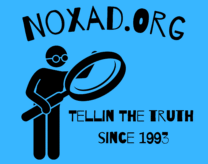You are taking a road trip in a car and want to know how far you’ve traveled (read the odometer) at various times during your trip

A. Independent variable, distance traveled; dependent variable, time
B. Independent variable, time; dependent variable, distance traveled
c. does not describe a function
When embarking on a road trip, many factors can influence the journey, from the distance covered to the time taken. One common question travelers might have is how the distance traveled relates to the time spent driving. To understand this relationship, we can delve into the concept of functions and their variables.
The Concept of Functions: In mathematics, a function describes a relationship between two sets of variables. For every input in the function, there is exactly one output. The independent variable represents the input, and the dependent variable represents the output.
Analyzing the Road Trip Scenario: Let’s consider the situation described: You’re on a road trip, and you want to know the distance you’ve traveled by checking the odometer at various times.
Considering the variables:
- Time: Represents specific moments or durations during the trip when you check the odometer.
- Distance Traveled: Represents the readings from the odometer, showing how far you’ve driven at those specific times.
With these variables in mind, for each time you check (input), there’s a corresponding distance traveled (output). Hence, this relationship can be described by a function.
The Verdict: Based on the given choices:
A. Independent variable, distance traveled; dependent variable, time – This choice suggests that the distance you’ve traveled determines the time, which isn’t the case in this scenario.
B. Independent variable, time; dependent variable, distance traveled – This is the correct representation. As time progresses (independent variable), the distance traveled changes accordingly (dependent variable).
c. does not describe a function – This isn’t accurate as the relationship between time and distance traveled in the scenario does describe a function.
In conclusion, in the context of the road trip described, time acts as the independent variable and distance traveled as the dependent variable. This understanding can be crucial for various real-life applications, from planning travel routes to understanding fuel efficiency.
As an Amazon Associate we earn from qualifying purchases through some links in our articles.
